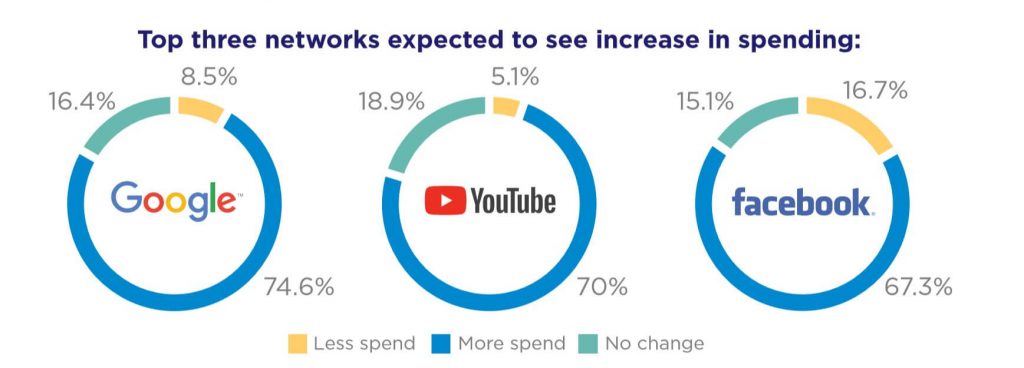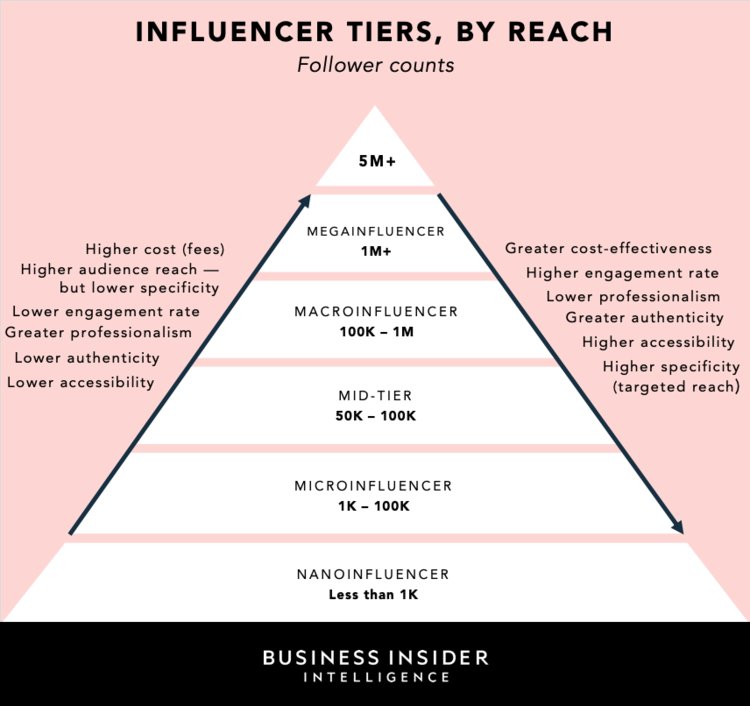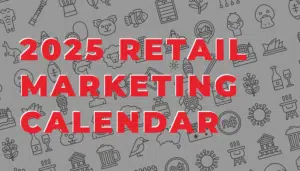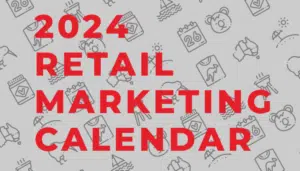Ultimate 2019 Marketing Guide
The Rise Of Digital Marketing In Australia
Over the past three decades, marketing has evolved significantly due to the rapid pace of technological development. This is an “ultimate” guide to marketing in 2019 whereby we identify the strategies & tactics marketers are using to achieve the best results in 2019.
From telephones allowing cold calls, to television paving the way for advertisements, and finally, the internet allowing for various streams of digital marketing that exist today – advancements in communication technology have had a profound impact on the global marketing industry.
The marketing industry in Australia has been on par with developed nations; in fact, it is fuelled by the drastic growth of smart devices, and high internet penetration.
Currently, Australia stands above most nations when it comes to internet use. As of 2018, it is counted amongst elite regions – with the others being North America and the entire Europe – where an overwhelming majority of the population enjoy internet connectivity, and are active across various social media platforms.
With 88% of the population using the internet in Australia, businesses are already leveraging the web to guide consumer journeys. Furthermore, 78% mobile penetration shows that a majority of the residents know their way around smartphone applications, and search engines.
A study surveyed respondents about their mobile and internet usage, and reported that 43% of the residents surf the net through their smartphones. However, there is also a significant amount of the population surfing through the web using tablets, and other hand-held devices. When included in the mix, the internet using population jumps to 63%.
For the emerging digital marketing industry in Oceania, these statistics reveal a promising market that is ready to embrace digitalisation at a large scale – and most modern marketers are well aware of this.
Consider this for example: from 2016 to 2018, the digital ad spend in Australia has increased by 24%. This significant rise in investment has also brought about another changes.
From constituting a smaller percentage, digital media ads now hold 56.4% of the entire ad spend, including the amount spent on conventional advertisement channels.
Considering the trends in Australia, 2019 promises to be another year where digital marketing will dominate the overall industry.
Industry Marketing Overview
As corporations and businesses that were inclined towards conventional marketing channels shift due to decreasing ROI, they are now turning towards digital marketing strategies.
This can be observed by the annual industry expenditure which hit the $8.8 billion mark in 2018. Compared to the previous year, this represents an increase of 11.6%.
Such strong performance in the face of an impending recession is proof of the industry’s potential, and how confident organisations and marketers are about this relatively newer marketing niche.
This growth has encouraged a generation of aspiring marketers who are determined to carve their reputation in the online marketing sphere.
These numbers have also led to a boom in digital agencies; as of 2018, studies reported that approximately 4000 digital agencies are working in Australia, providing employment opportunities to thousands of Aussies.
However, there is one unique aspect of the rising prominence of digital marketing. Despite a gradual increase in digital budgets, consumers are annoyed at the ‘noise’ they are facing from organisations and marketers.
According to a study conducted by Signal, consumers find numerous online ads to be ‘irrelevant’ and ‘annoying’ – leading to aggressive use of ad-blocking software.
Specifically, over 80% of Aussies are using some sort of ad blocking software since 2013. As a result, local consumers hold the record for the worst click-through rates on standard banner advertisements online.
Industry Marketing Trends
2018 was another year symbolised by industry-wide growth, and rising confidence in digital marketing channels.
Additionally, consumer behaviour trends align with how the industry fared over the year, with growing cell phone and social media usage.
For marketers, social media was the single most important marketing channel, with 92% of businesses prioritising their brand’s social media activity. The second most prioritised item on the list? Social media advertisements. Need I say more?
A study by BangDigital revealed interesting statistics on the trends in the Australian market. The larger players in the industry – agencies that have sufficient resources – have shown an encouraging shift towards the cultivation of consumer data to focus on data-driven marketing methodologies.
With investment into advanced analytics, consumer journey mapping, and automation, Australian businesses are on track to leveraging Big Data to extract consumer insights, and build targeted, customised campaigns.
However, smaller businesses have shifted their focus towards something that is understandably more cost-effective; consumer engagement. Driven towards increasing the brand to consumer interaction, they have invested in content marketing and social media marketing, primarily on Facebook and Instagram.
While marketing trends among varying businesses are mostly different, an overlap in certain areas can be observed. While content marketing has been overwhelmingly pursued by small and medium-sized digital ad agencies, the larger ones have not shied away from making use of this highly effective marketing strategy.
With 73% of marketers pursuing content marketing, it certainly appeals to the masses. The same cannot be said about data-driven and advanced advertisement techniques, such as programmatic marketing which was only pursued by 16% of marketers.
Another top digital trend is video marketing; with more than 500 million hours of video being viewed on YouTube each day, there is little doubt about the efficiency of this form of content.
In fact, an overwhelming majority (60%) of digital marketers had planned on using video as a core component of their digital strategy.
When it comes to the target audience, their behavioural trend has been reflective of the industry at large, with social media usage showing a year-over-year increase of 7%.
On average, Aussies have upped the daily average time they spend on the internet by 15 minutes, to reach an average of 5 hours and 34 minutes. When narrowed down to the time spent on social media, the average time per day amounts to 1 hour and 39 minutes.
As the industry continues to grow, and consumers find themselves increasingly hooked on to social media platforms, the verdict is clear – a social media-centric strategy is imperative for businesses to succeed in Australia.
Social Media Analysis
Social media now forms the core of a modern-day marketing strategy. Such is the ‘need’ to be there where the consumers are, that even conventional companies – such as Exxon and Johnson & Johnson – have made it a point to maintain a stable social media presence.

The Australian social media market is symbolised by high accessibility and internet usage. According to Yellow’s social media report for 2018, 79% of the Australian population actively uses social media. Compared to 2017, this is a 10-point increase.
A breakdown of the most popular social media platforms in Australia shows a similar trend compared to the most active regions in the world. The following numbers were recorded in January 2019:
- Facebook – 15 million monthly active Australian users
- YouTube – 15 million unique Australian visitors per month
- Instagram – 9 million monthly active Australian users
- WhatsApp – 7 million active Australian users
- Snapchat – 6.4 million monthly active Australian users
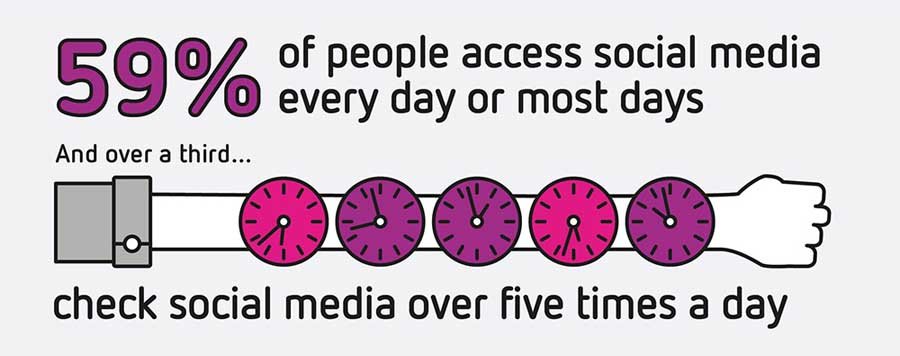
LinkedIn may not be widely popular, but its significance for professional networking cannot be denied. Especially considering how the platform has experienced a 10% growth in quarterly advertising reach, and is now placed just below the top 5 with 5.5 million users.
The two key takeaways from these statistics are:
- Facebook is definitely not dead, especially with the rise in the number of social media users
- Visual information is key; YouTube holds the 2nd spot on the list, highlighting how video is dominating the bulk of brand-focused content that is being produced
So, if you are a brand looking to target consumers in the Aussie market, there is no better platform than Facebook. The social media giant features a very high penetration in the local market, with 50% of the country logging onto Facebook at least once a day.
Many brands have already caught up to this trend, with 90% of digital marketers using Facebook to target their audience. With 64% of Facebook users ranging in the 18-39 age group, Facebook is the core focus for brands who are dedicated towards the youth.
In fact, if Facebook Messenger was to be considered as a separate platform, it would usurp Instagram and WhatsApp as the 3rd most popular social media application.
However, a quarterly growth analysis for 2018 Q4 revealed that Instagram was the only social media platform that displayed considerable growth. Facebook, while still leading the list, showed 0% growth. Surprisingly, Twitter, Snapchat, and LinkedIn experienced negative growth.
What’s In It For Marketers?
Fact is, Facebook marketing has a good ROI within the Australian audience. With an average of 0.9% click-through rate across all industries, this platform has always been lucrative for marketers and businesses. Notably however, we tend to see an average ROI of %500 across our facebook campaigns, throughout different industries. A major aspect in ensuring we achieve this result is encouraging our clients to have mobile friendly marketing strategy.
Some advertisers fear that the rising costs of social media ads will impact the industry as a whole. Nevertheless, stats reveal that despite a 17% increase in the average cost per ad, the ad impressions have increased by a whopping 21%.
Going back to the Band Digital report, it can be concluded that social media marketing is still on the rise. For example, in the annual analysis between 2017 and 2018, the percentage of brands and organisations advertising on social media platforms increased by 6%.
This means that 82% of Australian-based organisations are leveraging the power of social media to boost their business.
However, the same report did highlight a difference in how various businesses approach social channels. While Facebook has been the go-to social media platform for any type of business, the use of other platforms is impacted by the size of the business, and how they approach social media marketing.
Apart from Facebook, larger businesses tend to be more active on LinkedIn and Twitter. These platforms are geared towards a more professional audience, where large businesses can exercise their thought leadership strategy.
For smaller business, Instagram takes precedence over LinkedIn, and Twitter. The casual approach, coupled with an emphasis on lead cultivation and conversion, is better suited for SMEs.
Search Engine Analysis
Search engines, and search engine optimisation (SEO), has been a driving force in the digital marketing arena. From ‘how to watch the world cup, to more serious topics like ‘how to opt-out of my e-health record,’ and the evergreen, ‘how to lose weight’ – everyone uses search engines to look for answers to their queries.
With 3.8 million global searches per minute, Google is the clear leader in search engine market share. The same is the case in Australia, where the tech giant enjoys 93.16% of the entire search engine market share.
Concerning the local audience, 73% of users search for products and services online; if this isn’t enough to demonstrate the power of local SEO, I don’t know what is.
In other words, search engine optimisation allows you to present your business to 73% of the entire Australian population who are searching for different products and services.
What’s more, 59% of people who searched for a product or service, actually made the purchase online (as opposed to in-store). Out of these, 25% of the purchases happened over mobile devices.
Overall, the search engine arena has been evolving over the past few years, and Australia has – quite surprisingly – shown an eagerness to adopt one of search engine’s new iteration: voice search.
According to studies, 1 in 3 people use voice search due to its utility, and feasibility.
Additionally, Aussies have also taken a keen liking to smart speakers, and are increasingly buying them for their homes – which has significantly increased the number of voice searches. With a 29% smart speaker adoption rate, Australia has surpassed the United States, which trails behind with 26% adoption.
This means that Australian marketers and organisations who are looking to climb to the top of the SERPs, have to work towards creating content that is optimised for voice search. Find out more about recent secret google updates!
What’s In It For Marketers?
There are several key points here – but all of them are tied to one basic digital marketing practice; search engine marketing.
In the Band Digital survey mentioned above, digital marketers revealed that search engine marketing and optimisation hasn’t been at the forefront of their marketing priorities. However, it does come in as the 5th most important factor, 15% behind email marketing, and 3% behind website analytics.
This shows that despite a high number of users, organisations are not fully leveraging the power of SEO.
However, not all hope is lost. Aussie marketers are now shifting their focus towards search engine marketing. Studies in the niche have revealed encouraging statistics, with high investments and growth in the search engine arena.
According to a report on the Australian marketing industry by GroupM, marketers have realised the vast potential that lies within search engine marketing.
Their market survey reveals that search engine marketing is expected to become the single largest channel of the Australian digital marketing arena, expected to grow at about a 7.3% rate. This will place Australian paid search engine marketing to a value of $3.8 billion dollars in total, inherently this will be something that takes a larger share of future marketing plans.
How To Prepare For A Digital Future
The digital marketing arena is characterised by change; be it gradual changes like how SEO evolved from being keyword-centric to UX focused, or a tad bit dramatic ones like how Google Plus was shut down – change is a constant in this field where consumer preferences dictate how marketing is actually done.
And it is this very change that has allowed digital marketing to rise as a worthy alternative to traditional marketing practices. So, how do you succeed in an increasingly digital future?
We have prepared a list of actionable tips from industry experts that will help you shape your digital marketing strategies.
Create An Omni Channel Marketing Strategy
At the start, we had only traditional marketing. We had select options, ranging from print advertisements, radio advertisements, to billboards. This was followed by multi-channel marketing, where businesses leveraged direct and indirect promotion, and distribution channels to draw consumers.
While traditional marketing is far from over, businesses cannot risk ignoring the growing potential of digital marketing. And this has led us to the need for Omni channel marketing, where the buyer journey must be visualised, in order to create a seamless user experience.
This is especially important, as modern day consumers and visitors use different devices and mediums as they make their way through the conversion funnel.
As per Google, consumers now see smartphones as their personal assistant when it comes to shopping. Less than 2 decades ago, the average consumer was likely to use two touch-points when buying an item. Today, 50% regularly use more than four, with the average amounting to almost six touchpoints!
Content drives digital and this is not a simple brick-and-mortar store vs. eCommerce debate. With 87% of the global population taking to the internet before buying a product, the quality of Omni channel experience has an impact on traditional, over-the-counter sales as well. We cover in more detail the implications of content marketing and why its so important for more traditional style marketing approaches to adopt an in depth content marketing strategy.
After all, there is a reason that cross-channel sales are predicted to reach $1.8 trillion by the end of this year.
You Can’t Spell Digital Without Google
Google is the clear leader, with a majority share in two critical aspects of digital marketing – email and search engine. Such domination is a rare occurrence in the otherwise highly competitive digital arena, and that is undoubtedly a testament to the services and products being offered by the Silicon Valley giant.
However, this also means that the digital marketing world also has to play by Google’s rules. Marketers are still adjusting to the Google Ad Manager platform that unified two different products, DoubleClick for Publishers and Google Ads. On top of this, they also need to incorporate voice search into their marketing campaigns.
As mentioned above, Australians are ahead of the United States when it comes to smart speaker adoption. There’s more to it – of the 5.7 million smart speakers in Australia, Google Home has already established a 68% market share. Amazon Echo comes in 2nd with 14% market share.
Not only does Google exercise a strong hold on mobile voice searches, but it also dictates how voice searches are conducted through smart speakers in Australia. This has forced Aussie marketers to optimise their platforms for voice search, based on Google’s guidelines.
With 30% of all web browsing to be screen-less by 2020, marketers cannot risk waiting on how things pan out to be; they need to act fast.
The key to optimising for voice search is to curate content that is directed towards providing answers – focusing on what, how, when, and where. Additionally, experts recommend using a conversational tone, and embedding long-tail keywords in all your content.
Voice search removes the feasibility of having to scroll past different answers, which is why you must aim to provide valuable content that has a higher chance of featuring as a ‘snippet’ – or rank at ‘zero.’ This is primarily because rank zero answers are commonly read out by voice assistants.
Social Media Is A Marketing Staple
With approximately 2 hours reserved for social media every day, Aussies love being active on platforms such as Facebook, Instagram, Snapchat, and LinkedIn, to name a few.
With ad-blocking adoption on the rise, social media channels provide a relatively safer ground for advertisements, and a high engagement rate for organic posts.
Additionally, these platforms leverage user data to provide advertisers with unique features, such as the ability to segment target audience by demographics, gender, location, and interests. This makes social media the go-to advertisement platform for any brand looking to increase their exposure.
Think social media is only a preferable medium for targeting the younger generation? Check again.
Of the 15 million Facebook users in Australia, approximately 20% fall in the 55-65+ age range. Even for a platform as targeted for the youth as Instagram, 31% of its users are aged 50 to 65+!
Then there comes the platform divide; are you looking for a business-oriented platform where you can engage with professionals from around the globe, while establishing yourself as a thought leader? Then LinkedIn is the right fit for you.
Are you looking for mass exposure (1 billion users) with the ability to segment your ads based on your preferences? Facebook is an established platform that is optimised for high engagement.
There are several such examples, with different platforms providing a different perspective. However, the best strategy is based across multiple platforms, with a customised approach for each one.
With ad revenues for leading social media platforms growing over the past couple of years, marketers are increasingly leveraging social media marketing for increased ROI.
Foreword: The Future
The Australian digital marketing industry has shown progressive growth over the past couple of years, with increased opportunities afforded by high internet penetration rate, and increased social media usage.
Zenith reports that by 2020, all digital marketing channels combined, will constitute approximately two thirds of the entire ad spend in Australia. In 2017, the digital channels amounted to 57% of the entire spend.
For comparison, the digital ad spend in the United States was only 40% of the entire ad spend in 2017. If anything, this not only encourages marketers, but also highlights how the Australian market is more conducive to digital channels, as opposed to the US market.
However, such exposure to digital advertisements has prompted Aussies to use ad-blocking software. To address this problem, marketers need to devise strategies that place emphasis on building trust through value creation.
Marketers should also invest time in the curation of other high ROI channels, such as eBooks, video-based content, and webinar. These mediums allow organisations to showcase their expertise, and build long term, valuable relationships with their target audience.
With eCommerce also projected to grow at a steady rate of 10%, the digital marketing industry is set continue evolving in Australia. As a result, marketers must adopt new tactics, like voice search, into their strategies to stay ahead of the curve.
Still have questions? Feel free to contact us or check out our website!


